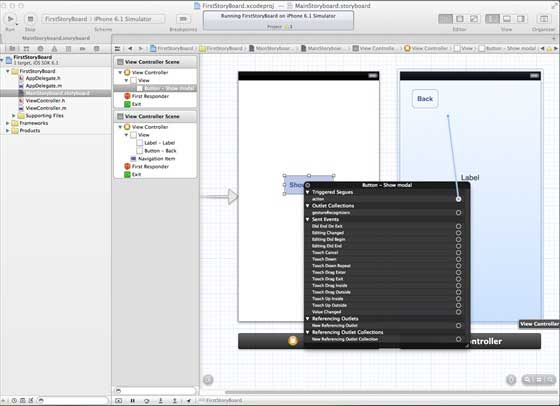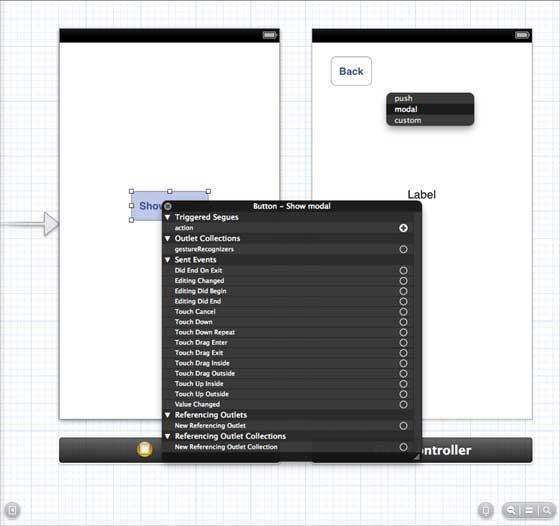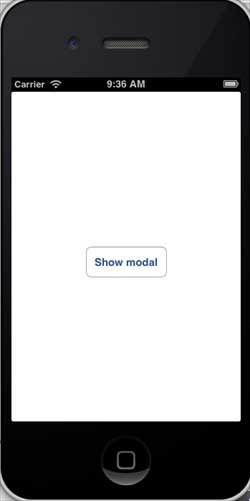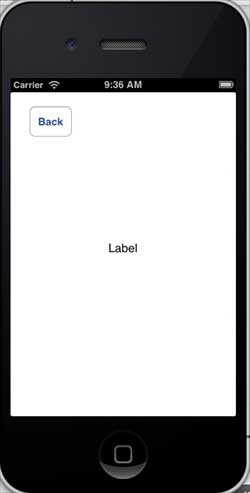iOS Storyboards
May 21, 2021 iOS Development Manual
Table of contents
IOS Storyboards
Brief introduction
Storyboards is only described in iOS 5, and when we use Storyboards, the deployment target should be iOS 5.0 or later.
Storyboards help us understand the visual flow of the picture in the interface for
Create all application screens under MainStoryboard.storyboard.
The instance step
1. Create a style view application and select the storyboard check box when you create the application.
2. Choose MainStoryboard.storyboard, where you can find a single view controller. Add a view controller and update the view controller, as shown below

3. Connect the two view controllers. Right-click the show mode button and drag it to the right-view controller in the left view controller, as shown in the following image:

4. Now select mode (mode) from the three display options shown below

5. Update ViewController.h as follows
#import <UIKit/UIKit.h> @interface ViewController : UIViewController -(IBAction)done:(UIStoryboardSegue *)seque; @end
6. Update the ViewController .m as shown below
#import "ViewController.h"
@interface ViewController ()
@end
@implementation ViewController
- (void)viewDidLoad
{
[super viewDidLoad];
}
- (void)didReceiveMemoryWarning
{
[super didReceiveMemoryWarning];
// Dispose of any resources that can be recreated.
}
-(IBAction)done:(UIStoryboardSegue *)seque{
[self.navigationController popViewControllerAnimated:YES];
}
@end
7. Select "MainStoryboard.storyboard" and right-click the "Exit" button to select and connect the back button in the right view controller, as shown in the following image

Output
Run the app on your iPhone device and get the following output

Now, select the display mode and you'll get the output below
